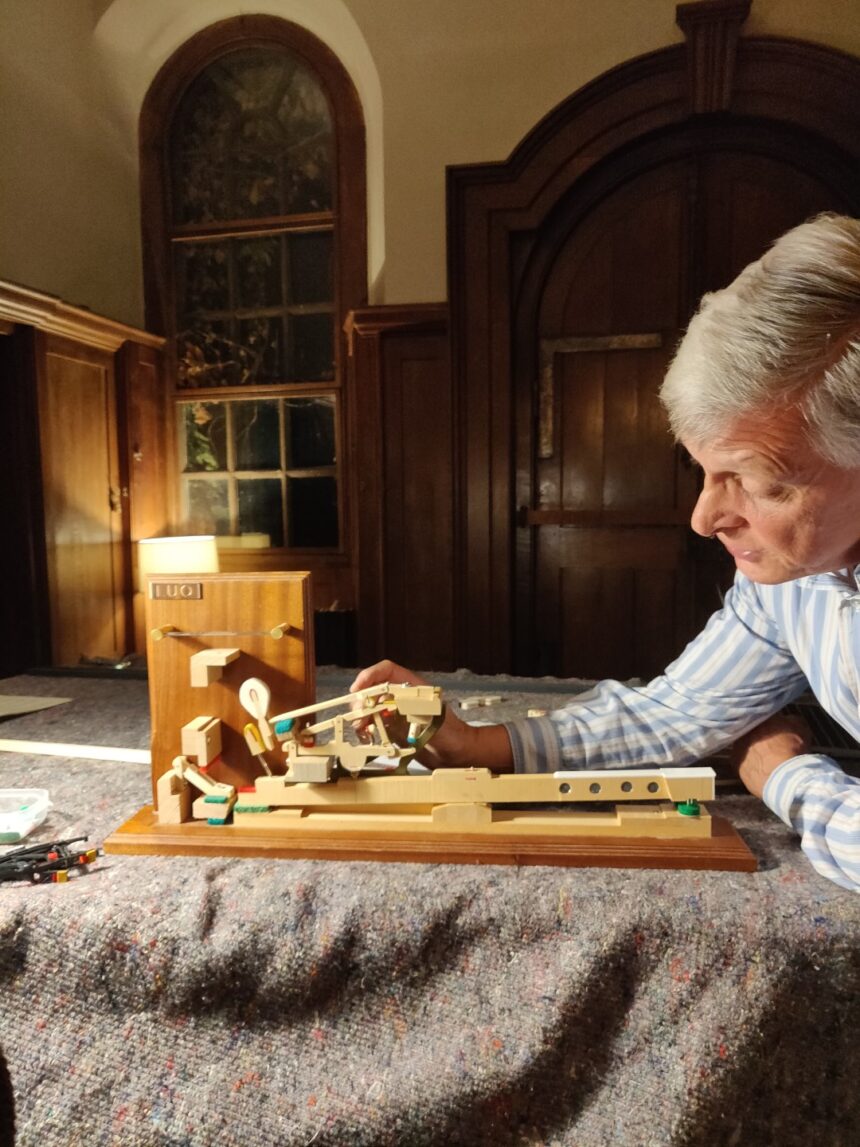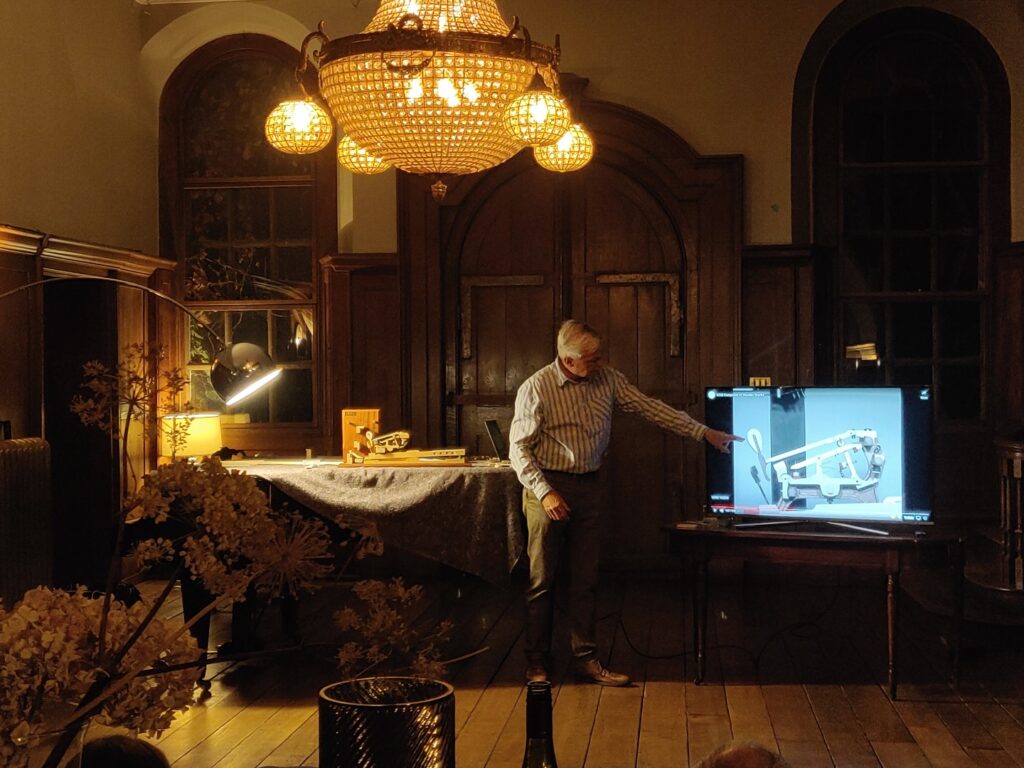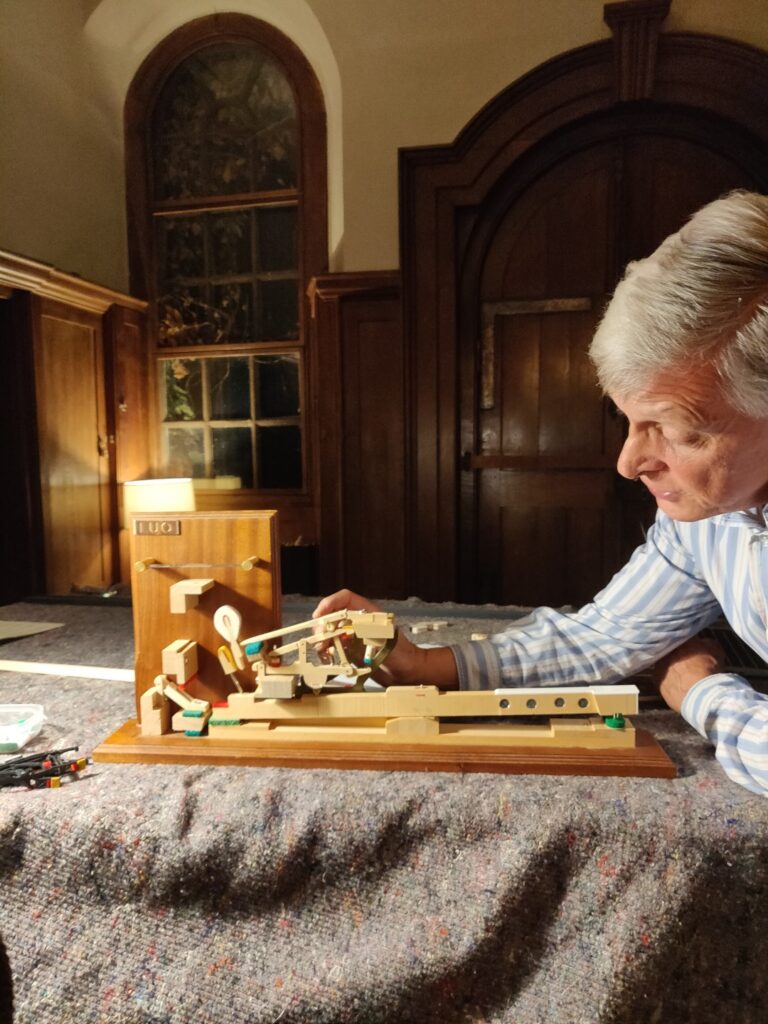We welcome a broad range of pianists on our residential courses: beginners through to concert pianists, and from a vast range of life and training backgrounds. Some learn best from a purely musical approach, others prefer a more scientific, mathmatical one. But all should at least have a basic understanding of the instrument they are learning to master!
We were delighted to welcome Stephen Carroll-Turner to give a very special and enlightening talk on the mechanics of the grand piano on a recent course for Advanced pianists attending a course with tutor Graham Fitch.
Stephen is a pianist and piano technician who has been tuning, rebuiliding, restoring and servicing for 30 years. During the 1990s he worked for Bösendorfer as a tuner and technician, preparing pianos for concerts and recordings. He since moved to Brighton, and for the last 7-8 years has been focussing on the redesign and rebuilding of grand piano action using Precision Touch Design.
He has rebuilt our own Finchcocks Bösendorfer 200, replacing all felts, hammers and shanks – giving our well-loved concert piano a complete rebuild and renewing some very worn action. He came highly recommended by Graham Fitch who has seen a big improvement to his own Bechstein model B thanks to Stephen’s craftmanship.
Addressing the question Why is it that two identical pianos of same make, size, age play completely differently? Stephen delved into what, for many, are the mysteries of the inside of a grand piano.
For an insight into the work carried out on our beautiful Bösendorfer – and the foundation of Stephen’s talk to course guests – check out this video!



